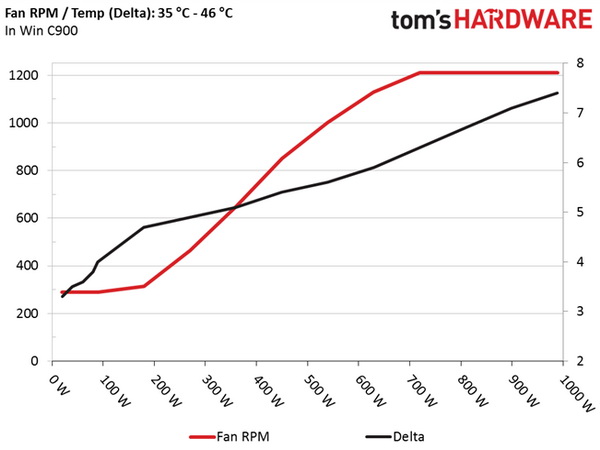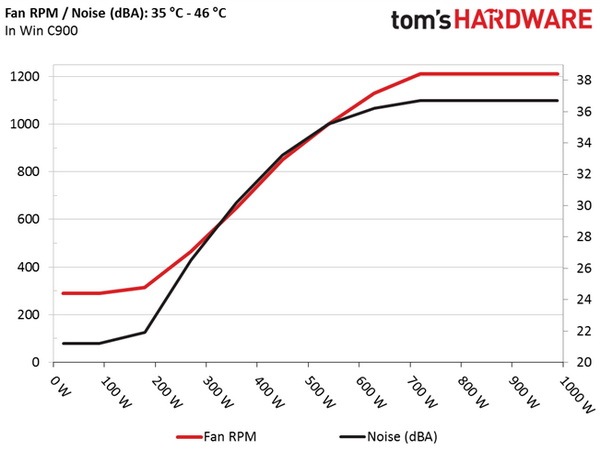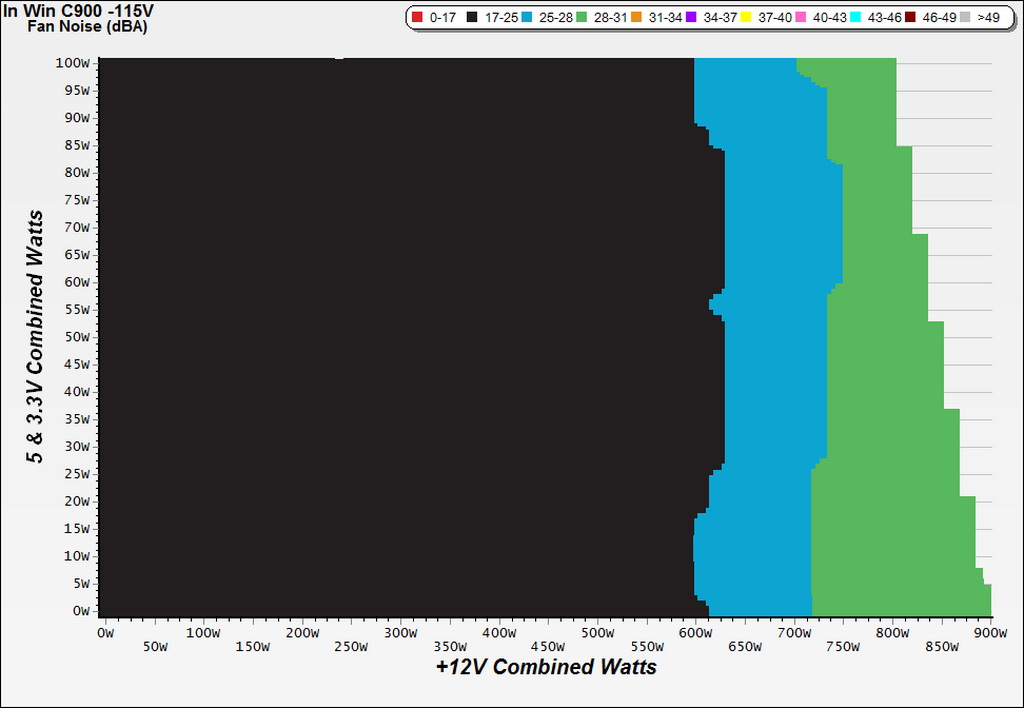In Win Classic Series C 900W PSU Review
In Win's Classic series consists of only two members featuring 750 W and 900 W capacities. The C900 is our test subject today. Besides a great finish and good looks, it promises reliable and quiet operation, along with high efficiency.
Why you can trust Tom's Hardware
Efficiency, Temperature, And Noise
Efficiency
Our efficiency testing procedure is detailed here.
Using the results from the previous page, we plotted a chart showing the C900's efficiency at low loads and loads from 10 to 110 percent of its maximum-rated capacity.
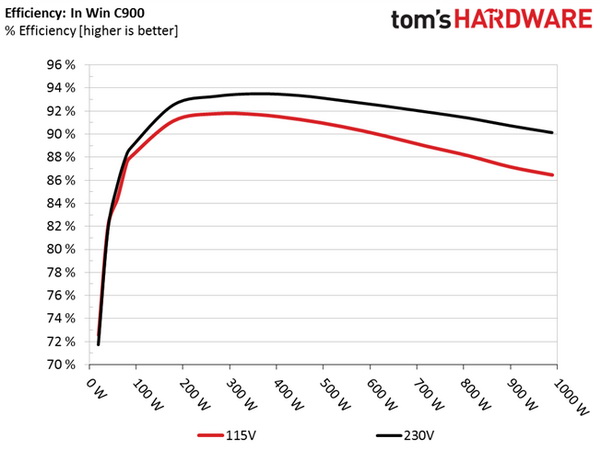
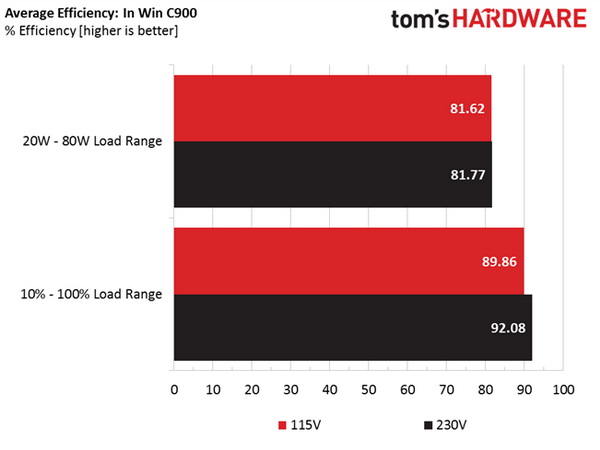
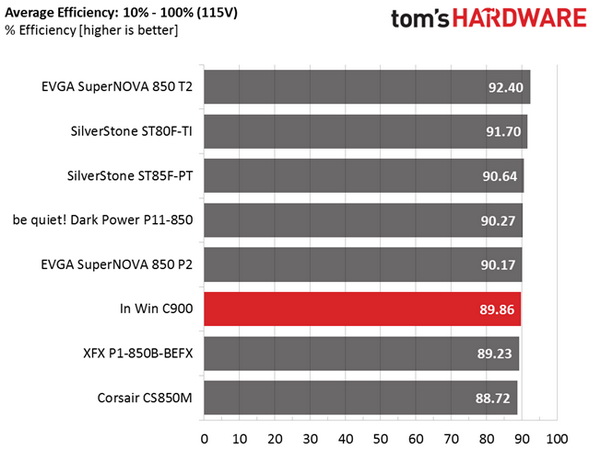

Under normal loads, the C900 comes very close to the competition. With light loads it even manages to take the lead from high-end units like the EVGA 850 P2.
Efficiency At Low Loads
In the following tests, we measure the C900's efficiency under loads significantly lower than 10 percent of its maximum capacity (the lowest load the 80 PLUS standard measures). The loads we dialed were 20, 40, 60 and 80 W. This is important for representing when a PC is idle, with power-saving features turned on.
| Test # | 12V | 5V | 3.3V | 5VSB | DC/AC (Watts) | Efficiency | Fan Speed | Fan Noise | PF/AC Volts |
|---|---|---|---|---|---|---|---|---|---|
| 1 | 1.175A | 0.481A | 0.475A | 0.194A | 19.62 | 72.56% | 290 RPM | 21.2 dB(A) | 0.808 |
| 12.416V | 5.120V | 3.358V | 5.028V | 27.04 | 115.1V | ||||
| 2 | 2.382A | 0.968A | 0.982A | 0.395A | 39.77 | 82.02% | 290 RPM | 21.2 dB(A) | 0.918 |
| 12.401V | 5.114V | 3.354V | 5.018V | 48.49 | 115.1V | ||||
| 3 | 3.586A | 1.460A | 1.490A | 5.008A | 59.85 | 84.39% | 290 RPM | 21.2 dB(A) | 0.944 |
| 12.388V | 5.107V | 3.350V | 5.008V | 70.92 | 115.1V | ||||
| 4 | 4.789A | 1.962A | 1.969A | 0.799A | 79.80 | 87.53% | 290 RPM | 21.2 dB(A) | 0.974 |
| 12.364V | 5.100V | 3.346V | 4.999V | 91.17 | 115.1V |
Efficiency is pretty high under light loads, while output noise is low since the fan barely spins.
5VSB Efficiency
The ATX specification states that 5VSB standby supply efficiency should be as high as possible, recommending 50 percent or higher efficiency with 100 mA of load, 60 percent or higher with 250 mA of load and 70 percent or higher with 1 A or more of load.
We take four measurements: one each at 100, 250 and 1000 mA, and one with the full load the 5VSB rail can handle.
Get Tom's Hardware's best news and in-depth reviews, straight to your inbox.
| Test # | 5VSB | DC/AC (Watts) | Efficiency | PF/AC Volts |
|---|---|---|---|---|
| 1 | 0.101A | 0.51 | 66.23% | 0.079 |
| 5.033V | 0.77 | 115.1V | ||
| 2 | 0.251A | 1.26 | 75.90% | 0.156 |
| 5.028V | 1.66 | 115.1V | ||
| 3 | 1.002A | 5.01 | 79.90% | 0.342 |
| 5.003V | 6.27 | 115.1V | ||
| 4 | 3.002A | 14.82 | 79.04% | 0.452 |
| 4.937V | 18.75 | 115.1V |
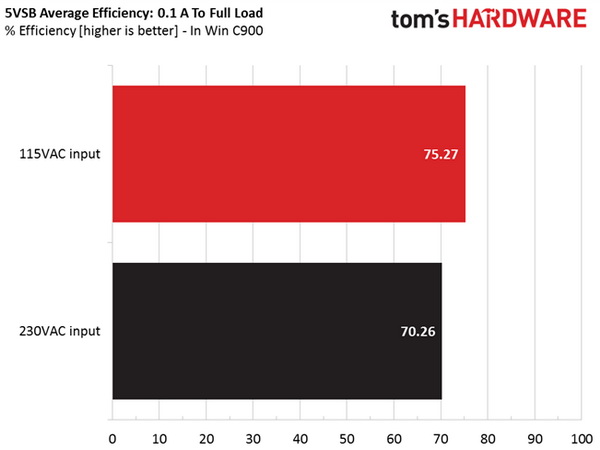
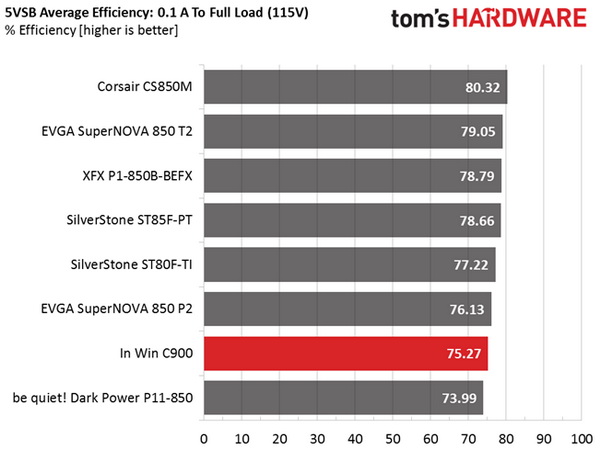
We wanted to see higher efficiency on the 5VSB rail. Excelliance's standby PWM controller isn't so effective, it seems.
Power Consumption In Idle And Standby
In the table below, you'll find the power consumption and voltage values of all rails (except -12V) when the PSU is idle (powered on, but without any load on its rails), and the power consumption when the PSU is in standby mode (without any load, at 5VSB).
| Mode | 12V | 5V | 3.3V | 5VSB | Watts | PF/AC Volts |
|---|---|---|---|---|---|---|
| Idle | 12.502V | 5.126V | 3.363V | 5.036V | 5.82 | 0.392 |
| 115.1V | ||||||
| Standby | 0.15 | 0.015 | ||||
| 115.1V |
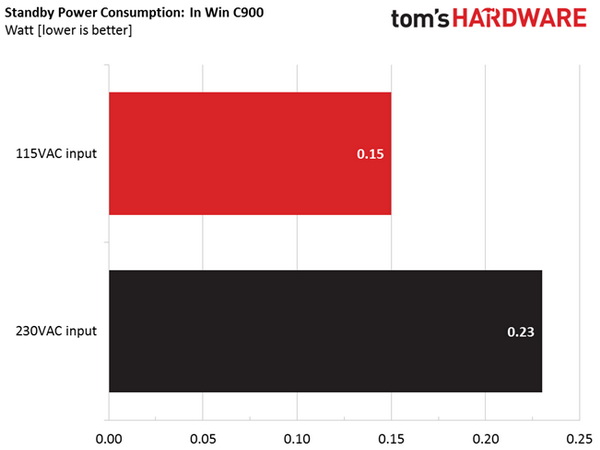
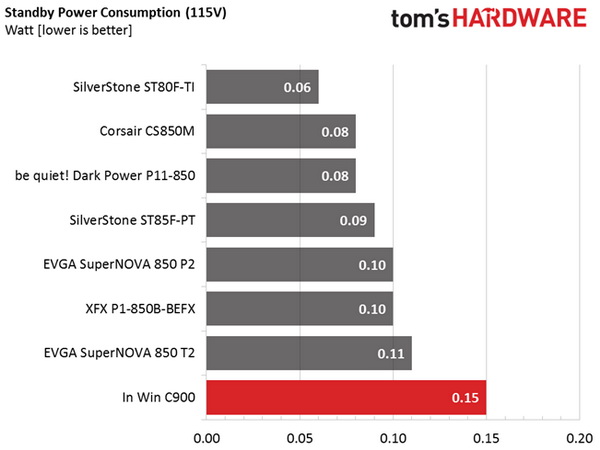
Phantom power might be much lower than the ErP Lot 6 2013 directive's high threshold, however, it is significantly higher than what we usually measure from modern PSUs.
Fan RPM, Delta Temperature, And Output Noise
Our mixed noise testing is described in detail here.
The first chart below illustrates the cooling fan's speed (in RPM), and the delta between input and output temperature. The results were obtained at 35 °C (95 °F) to 46 °C (114.8 °F) ambient temperature.
The next chart shows the cooling fan's speed (again, in RPM) and output noise. We measured acoustics from one meter away, inside a small, custom-made anechoic chamber with internals completely covered in sound-proofing material (be quiet! Noise Absorber kit). Background noise inside the chamber was below 18 dB(A) during testing, and the results were obtained with the PSU operating at 35 °C (95 °F) to 46 °C (114.8 °F) ambient temperature.
The following graph illustrates the fan's output noise over the PSU's operating range. The same conditions of the above graph apply to our measurements, though the ambient temperature was between at 28 °C (82.4 °F) to 30 °C (86 °F).
This is a very quiet unit, even though it uses a 120 mm fan. The slow-spinning blades, along with a relaxed profile are good for near-silent operation under every condition.
Current page: Efficiency, Temperature, And Noise
Prev Page Load Regulation, Hold-Up Time, And Inrush Current Next Page Protection Features, Evaluated
Aris Mpitziopoulos is a contributing editor at Tom's Hardware, covering PSUs.
